Stuart Forster provides an overview of things to do in Harrogate, North Yorkshire.
Disclosure: Some of the links below and banners are affiliate links, meaning, at no additional cost to you, I will earn a commission if you click through and make a purchase.
Looking for reasons to visit Harrogate, North Yorkshire? The spa town was once a destination of choice among members of European high society. Royalty, nobles and people of influence enjoyed lengthy stays to ‘take the waters’, which were believed be beneficial to health, and spent time socialising.
By contrast, I popped there for a day trip, to have tea at Bettys Café Tea Rooms.
The outbreak of World War One, in 1914, resulted in a downturn in the patronage of Harrogate’s spas. Members of Europe’s elite now tend to favour jetting to tropical climes for luxury spa breaks and fashionable detox programmes. Meanwhile, Harrogate remains a charming place to visit. Swathes of greenery plus grand Georgian and Victorian houses make Harrogate a pleasant place to stroll.
Things to do near Harrogate
Some visitors come because the town is a handy base for visiting the Yorkshire Dales National Park, whose boundaries are less than a half-hour’s drive away. Nidderdale Area of Outstanding Natural Beauty is another nearby attraction. Nidderdale is home to the National Trust-managed Brimham Rocks.
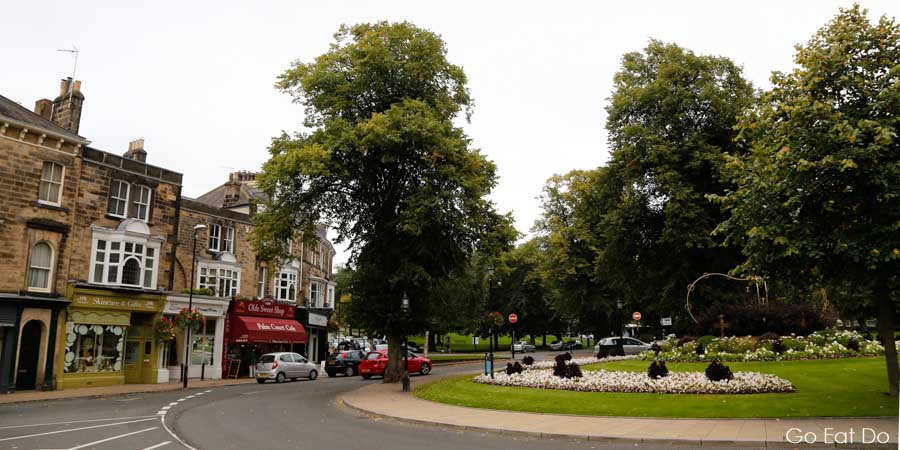
Turkish Baths Harrogate
The town’s heyday as a spa has passed but it’s still possible to de-stress in the multi-room Turkish Baths and Health Spa (tel. 01423 556746).
Aesthetically impressive, the atmospheric bathhouse in Parliament Street features Moorish-inspired interiors. Painted ceilings, colourful screens and horseshoe-shaped arches await visitors. It once formed part of the grand Royal Baths, which were declared open by the Duke of Cambridge on 23 July 1897.
Guides lead 45-minute tours at 9.00 am on Mondays, Wednesdays and Fridays. They introduce the history of the Turkish baths and what visitors can experience. (Call the baths to book a place on one of the tours.)
Modern bathers can sweat in the steam room before moving through a series of heated rooms. The hottest is the Laconium, where the latent heat opens bathers’ pores, stimulates circulation and is reputed to have a detoxifying effect. Those robust enough to withstand the shock of cold water can plunge into a chilled pool that flushes out toxins and closes pores.
Constructing the Royal Baths, between 1894 and 1897, was a huge undertaking. Baggalley and Bristowe, a firm of London-based architects, won a competition run by Harrogate Corporation. A budget of £120,000 was set aside for the building. That amount was then an enormous sum.
Electric hydrotherapy, peat baths and mud baths counted among the range of treatments once offered to guests after consultations with the Royal Bath’s doctors.
The story of Harrogate spa
The Royal Pump Room Museum, inside an early Victorian building, tells the story of Harrogate’s spa heritage. It exhibits artefacts formerly used by bathers.
The restorative, health-giving properties of Harrogate’s iron- and sulphur-rich water were discovered in 1571 by William Slingsby. His surname is now associated with Slingsby Gin, which is distilled in the North Yorkshire town
Over time, a range of curative treatments evolved for rheumatism, skin diseases and ailments such as gout. Some meant drinking Harrogate’s water, others involved bathing.
Inevitably, guesthouses sprang up to accommodate visitors undergoing treatments. Health tourism, long before that term became fashionable, was a major contributor to Harrogate’s economy.
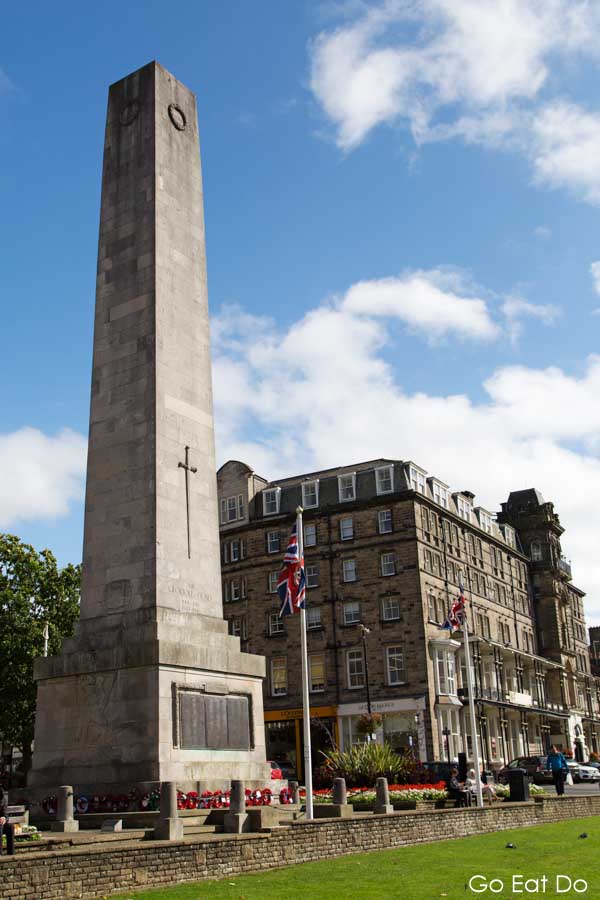
Spa tourism and enclosure
Spa tourism began to boom at a time of radical change in Britain. During the 18th century, vast swathes of English common land were enclosed by acts of parliament, a development generally unpopular among the common people.
Enclosure was a key development in the Agricultural Revolution of that era, an important facet of British history. Yet it’s much less frequently discussed than the steam-driven Industrial Revolution that resulted in Harrogate acquiring a railway station in 1862.
Once enclosed — that meant being fenced off or demarcated by hedges — land could be intensively farmed, under private ownership, using scientific methods of land cultivation. The origins of The Stray, one of Harrogate’s many areas of greenery and parkland, dates from that era.
After the Great Forest of Knaresborough was enclosed in 1770, locals expressed concern that they may be in danger of losing the right of public access to Harrogate’s mineral-rich springs. On 19 August 1778, land between the villages of High and Low Harrogate was set aside for public use in perpetuity.
“200 acres shall forever hereafter remain open and unenclosed, and all persons shall and may have free access at all times to the said springs…and enjoy full and free ingress, egress and regress…,” says the grant recording the origins of The Stray, across which footpaths now meander.
The happiest place in Britain
That open space is one of the factors fostering a high quality of life in the town. Locals are proud to inform visitors that Harrogate was voted the happiest place in Great Britain by participants in the Rightmove survey for three successive years, from 2013 to 2015.

Bettys Café Tea Room
On busy days, people queue beyond the door for afternoon tea in Bettys Café Tea Room. You can see them waiting beneath a broad canopy on Parliament Street. The chic café, where personable waiting staff wear old-style uniforms, was opened in 1919 by a Swiss man, Frederick Belmont.
According to legend, Belmont, a baker and confectioner, settled in Yorkshire because its clean air and greenery reminded him of Switzerland. Perhaps his non-English heritage accounts for the glaring omission of an apostrophe in his popular café’s name?
Mystery, though, surrounds the identity of the eponymous Betty. There’s speculation that the name may be a tip of the hat to the late Queen Mother, Elizabeth Bowes-Lyon.
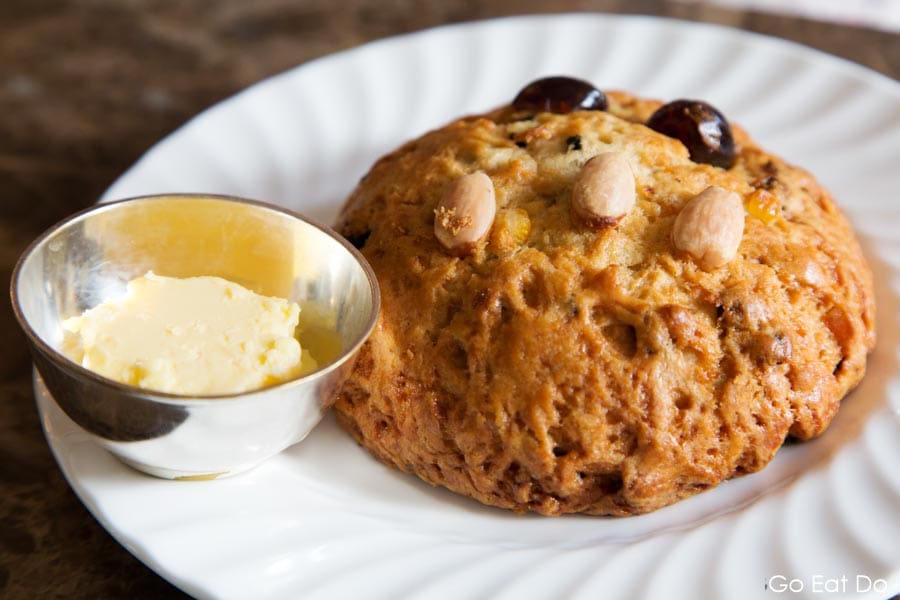
Cycling in Yorkshire
One way of maximising the amount of ground covered while exploring Harrogate is to hire a bicycle. Vern Overton Cycling offers a guided-ride service. One of the district’s main attractions is the Royal Horticultural Society Garden Harlow Carr, about one-and-a-half miles from the pedestrianised centre of town.
Victoria Shopping Centre and a smattering of independent stores are among the reasons for keen shoppers to visit Harrogate. One of the most distinctive façades is that of Mr Arkwright’s Tool Emporium, an old-fashioned corner store with hardware stacked under a canopy supported by black-painted iron pillars.
Art aficionados should look inside the Mercer Art Gallery (31 Swan Road), where work by Yorkshire-based artists frequently features.
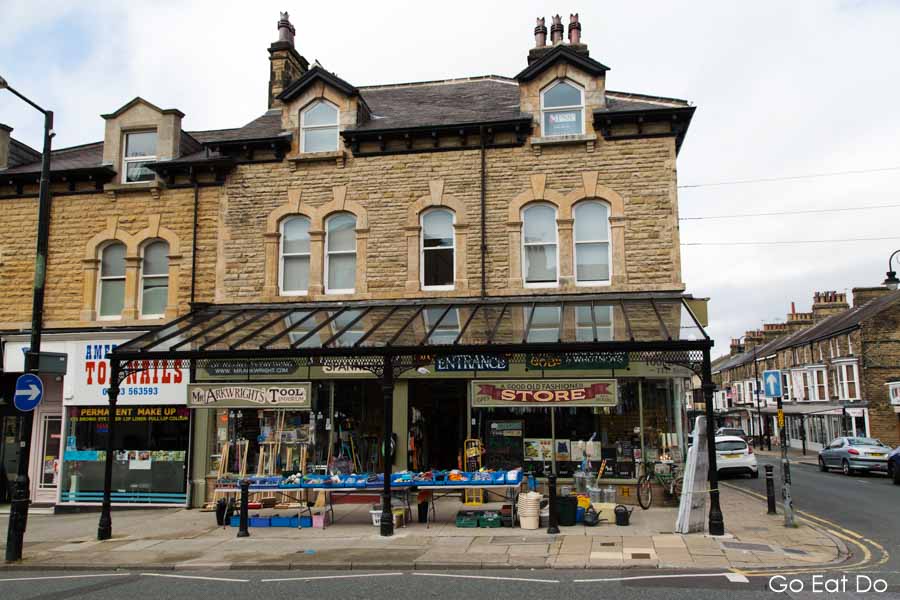
Harrogate Convention Centre
Conferences are a reason for many visits to Harrogate. Harrogate Convention Centre is a modern building near the heart of the town.
The Yorkshire Showground, on the edge of town, hosts events including the Harrogate Spring Flower Show (April), the Great Yorkshire Show (July) and the Yorkshire Antiques and Arts Fair (November). Harrogate International Centre is also a major venue.
A cuppa and a slice of cake in Bettys and the heat of the Turkish baths are ways of warming up if Yorkshire’s winter weather proves blustery and cold.
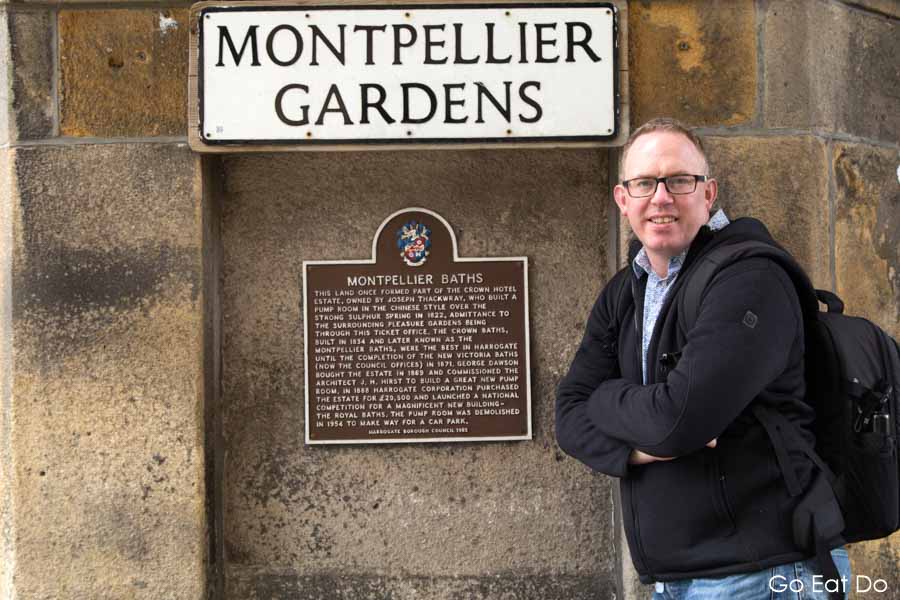
Travel to Harrogate
Harrogate’s railway station is in the heart of the town, which is near the A59.
The 85-mile drive from Newcastle-upon-Tyne took around one hour and 40 minutes. For travellers from further afield, Harrogate town centre is 10 miles north-east of Leeds Bradford Airport.
Things to do in Harrogate
If you plan on staying overnight, consider purchasing tickets for a show at Harrogate Theatre. The town’s main playhouse was built in 1900.
The late-Victorian, Grade II listed building hosts a diverse programme of shows. Look out for its musicals, dance and drama performances.
Hotels in Harrogate
Harrogate and the surrounding area offer a variety of places to stay, from guesthouses to country spa hotels.
The Hotel Du Vin and Bistro (Prospect Place, Harrogate, HG1 1LB) has 48 stylish guest rooms in connected Georgian buildings.
The Crown Hotel Harrogate (Crown Place, Harrogate, HG1 2RZ; tel. 01423 567755) offers accommodation in 114 rooms in a grand, centrally situated building with a long and interesting history.
Less than a 20-minute drive from the town centre, Rudding Park (Follifoot, Harrogate, HG3 1JH; tel. 01423 871350) is a 90-room luxury hotel with a spa and golf course. Set in the countryside, it’s a gorgeous place for a getaway with someone special.
Restaurants in Harrogate
For avid foodies, the presence of more than 130 restaurants represents an array of mouth-watering reasons to visit Harrogate. Three popular places to dine are:
Bettys Café Tea Rooms (1 Parliament Street, Harrogate, HG1 2QU; tel. 01423 814070) is a popular spot for afternoon tea. Food is served throughout the day, from 9.00 am to 9.00 pm. House specials include Swiss-style bacon and raclette rösti plus chicken schnitzel. My personal favourite is the Yorkshire Fat Rascal, which is similar to an almond-topped scone and served with butter. Pick up cakes or other food and drink items in the shop.
The Ivy Harrogate (7 – 9 Parliament Street, Harrogate, HG1 2QU) is an elegant brasserie. Part of a restaurant chain with outlets across the United Kingdom, The Ivy is known for slick service, quality cocktails and consistently good food.
The Fat Badger (Coldbath Road, Harrogate, HG2 0NF; tel. 01423 505681) serves modern British food in its restaurant. The bar menu includes Scottish mussels, roasted monkfish tail and a selection of steaks.
Map of Harrogate
Zoom into the map of Harrogate below to view places of interest in and around the North Yorkshire town:
Books about Harrogate and Yorkshire
Planning a trip to Harrogate and North Yorkshire? You can buy the following books via Amazon:
Secret Harrogate by Paul Chrystal.
A to Z of Harrogate: People – Places – History by Paul Neesam.
Harrogate and Nidderdale: Short Scenic Walks by Paul Hannon.
Pathfinder Guides’ Yorkshire Dales: Outstanding Circular Walks.
Further information
The Visit Harrogate and Welcome to Yorkshire websites have more information about the town and surrounding area.
Stuart Forster, the author of this post, is an award-winning travel and food writer from North East England.
Thank you for visiting Go Eat Do and reading this post about things to do in Harrogate. Looking for ideas for days out in the north of England? Check out this post suggesting 16 things to do in Sedbergh.
If you enjoyed this post, please sign up for the free Go Eat Do newsletter. It’s an easy way of getting links to posts once a month.
‘Like’ the Go Eat Do Facebook page to see more photos and content.
A version of this post was originally published on Go Eat Do on 18 January 2018.
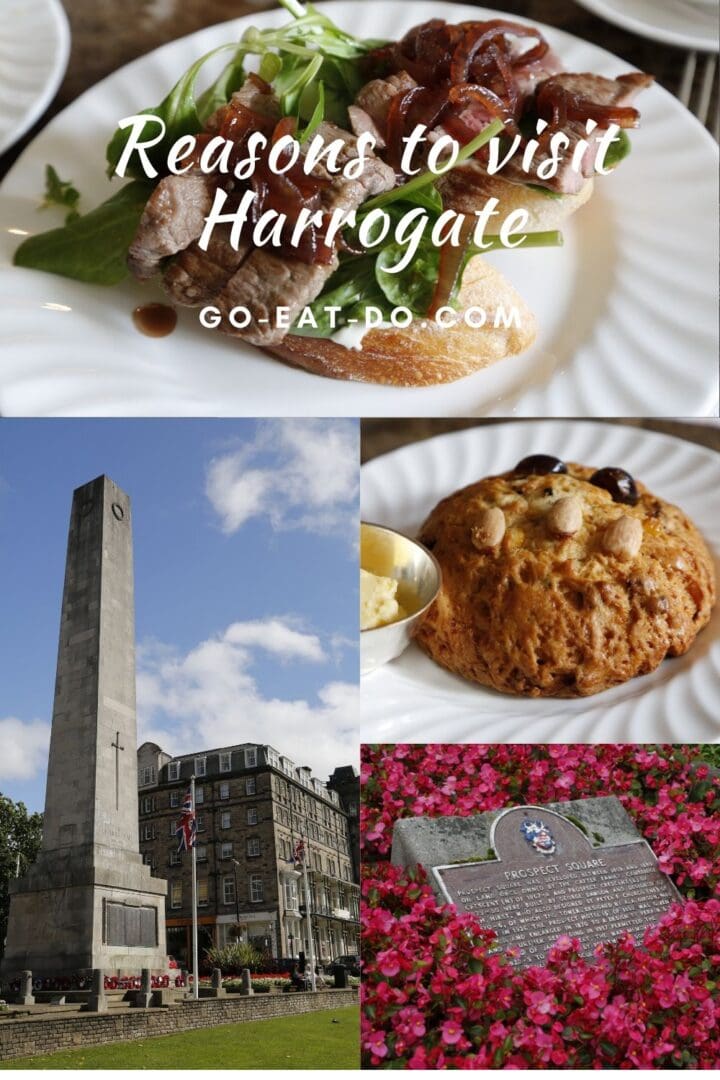




Katie Jane
January 4, 2018 at 15:56Some great things mentioned! Betty’s has to be on the top of my list to do in Harrogate. I go every time! Katie
Stuart Forster
January 5, 2018 at 16:12I’m looking forward to returning in the summer when the gardens are in full bloom.